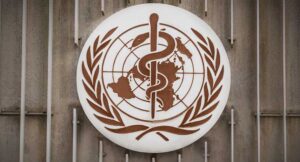BSNL’s loss for the nine-month period ending December 2024 is lower by Rs 782 crore, due to changes in the method of amortisation on spectrum fees, according to the company’s auditors. This, along with a rise in revenues, resulted in a net loss of Rs 2,527 crore for the period, compared to Rs 4,522 crore in the same period last year.
The emphasis by BSNL’s auditors assumes significance as owing to certain accounting adjustments in depreciation & amortisation as well as in employee benefit expenses, the company reported a `262 crore profit for the October-December quarter. This was the first profit since 2007.
Besides emphasising on the impact of change in depreciation method, the company’s auditors have also flagged short-funding of Rs 536 crore by BSNL towards employee retirement benefits and leave encashment.
“We draw attention to Note No 4(iv) of the notes regarding change in method of amortisation of spectrum fee during the current quarter and due to which the loss of the company for nine months ended 31.12.2024 is decreased by Rs 781.98 crore,” BSNL auditors VK Jindal & Co said in its financial statements.
The company has changed the method of amortisation of spectrum fees (intangible asset) from straight line method (SLM) to the Unit Based Amortisation Method (UBAM) prospectively to provide more accurate reflection of cost allocation, matching with the consumption of economic benefits derived from the spectrum utilisation, it said.
The auditors added that the obligation of the company for employee retirement benefits is short-funded by Rs 413.59 crore towards gratuity and by Rs 122.35 crore towards leave encashment.
According to analysts, the accounting adjustments do not reflect a real turnaround and the company will have to focus on improving its core operations for a sustainable financial turnaround or long-term profitability.
In a statement on Tuesday, BSNL said that this is a sustained trend across all recent quarters and is to be understood through a business lens and not an accounting one.
“The improvement in financial performance of BSNL is a reflection of the sustained management and government efforts by way of improving its top line by increased business growth in its verticals and managing its bottom line costs in an efficient manner in line with accounting standards,” BSNL said, adding that the company is confident that the growth trajectory will continue in the next quarter and in times to come.
BSNL’s consolidated revenue from operations increased 2.7% QoQ and 9.3% YoY to Rs 4,973 crore in the October-December quarter. Additionally, its other income — including profit from the sale of assets — rose sharply by 91% QoQ and 38% YoY to Rs 707 crore, driven mainly by a Rs 421 crore write-back of excess provisions.
In its core business, BSNL’s consumer mobility revenue rose 14% QoQ and 11% YoY to Rs 2,060 crore, aided by tariff hikes by private players, which temporarily shifted some users to BSNL. Meanwhile, revenue from the enterprise segment declined 9% QoQ and 7% YoY to Rs 1,147 crore, while consumer fixed access revenue remained largely flat at Rs 1,766 crore.
Among other key things, the auditor said there are certain issues with regard to which it was unable to assess the impact on the statement of financial results. Some of the issues relate to reconciliation of account balances, dues with the government, GST balances, old pending balances, among others.
Notably, a significant 48% quarter-on-quarter (QoQ) and 44% year-on-year (YoY) drop in depreciation and amortisation expenses to Rs 814 crore was a key factor behind BSNL’s return to profitability in the October-December quarter. Financial Express









